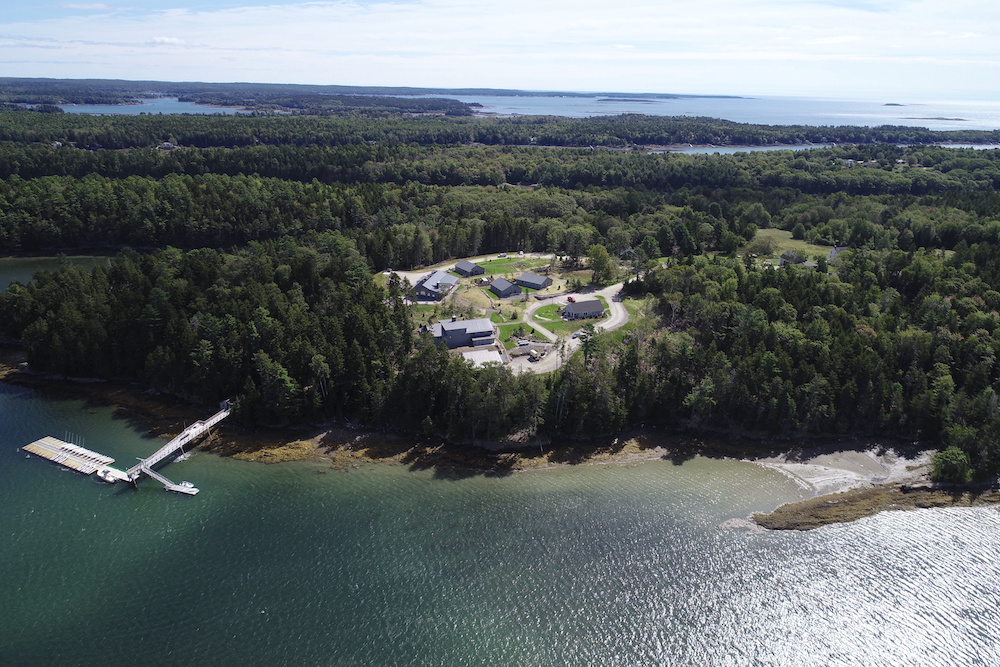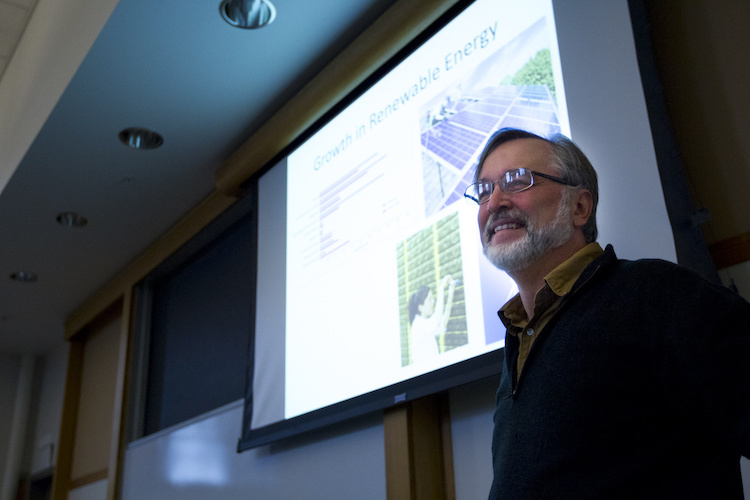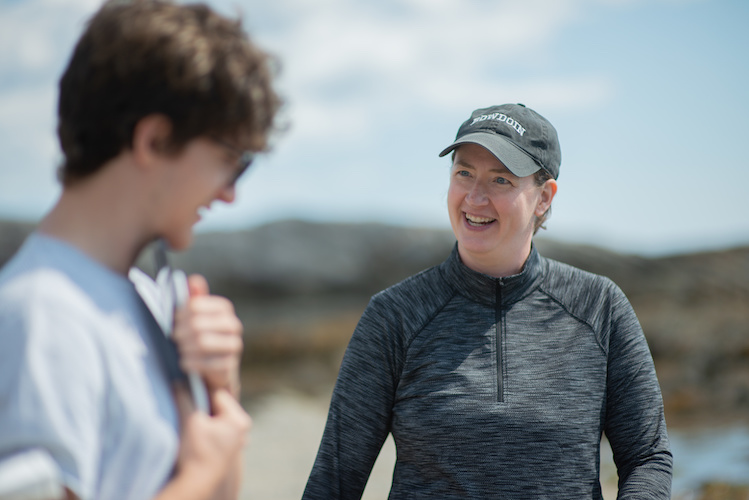History
The remaining farmhouse—now the administrative headquarters for the Center—serves as a link between the past and present. Extending even further back in time, the area was a resource-rich gathering place for Native people.
Geological History
The Center is located on Orr’s Island in Harpswell, one of a series of islands and peninsulas in Casco Bay formed by the collision of two ancient continents, Laurentia and Avolonia, about 400 million years ago. Subsequent volcanic, erosional, and sedimentary activity broke these land masses into a series of islands that all lie on a north-south axis.

Impacts of Humans
The SCSC offers an example of how both Indigenous and colonial people lived at the interface of land and sea for thousands of years. On the northern end of the property, shellfish middens —piles of shells and bones discarded by Native people—have been dated to between 1,270 AD and 1,400 AD. The presence of Native people here, however, likely extends deeper into time, back to the Holocene, approximately 11,500 years ago, when glaciers retreated and humans spread around the globe and began developing complex societies.
The history of the island after the arrival of Europeans comes into much sharper focus for us. In the mid-eighteenth century, Joseph Orr became the first resident-owner of the island. As a twenty-one-year-old emigrant from Northern Ireland, Orr came to Harpswell Neck in 1732 with his parents and siblings. About a decade later, Orr purchased the island from the heirs of two earlier settlers, and in 1780 deeded acreage in the northern part of the island to his stepson (and only son) Robert Wyer, who lived and farmed on the land with his family. In the ensuing years, three generations of Wyers farmed the point, clearing seventy acres over time.
In 1893, a Wyer widow sold the family farm to Lewis Hanson, a Danish immigrant. The Hansons built a new farmhouse that forms the main part of the current SCSC farmhouse, now used as an administrative and teaching center.
After Hanson died in 1932, the forest began the process of reclaiming the fields and meadows. In 1957, William Thalheimer, Class of 1927, and his wife, Irma, purchased the farm. They expanded the farmhouse and bought additional acreage, bringing the total size of the property to 118 acres with 2.5 miles of shoreline.

Beginning of Bowdoin’s Coastal Studies Center, 1981-present
Bowdoin’s chapter in the history of the property began in 1981, when the Thalheimers deeded it to the College. The couple continued to live at the farmhouse until William died in 1986, and Irma died in 1994.
Following Irma’s death, the College began discussing how best to use the site to advance Bowdoin’s commitment to exploring, researching, and writing about the environment. The College decided to develop a new Coastal Studies Center that would feature experiential learning in Maine's coastal environments.
Groundbreaking: The Gorman’s Gift
Inspired by this vision, Leon Gorman ’56, H’83 and his wife, Lisa, donated $2.1 million to fund new construction, including a marine lab with a flowing seawater system, an off-grid terrestrial laboratory, and renovations to the Hanson farmhouse for educational activities and a residential apartment. Peter Lea, Bowdoin professor of earth and oceanographic studies, became the Coastal Studies Center’s first part-time director, from 1996 to 1999.
Active Scholarship: Gifts from Geoff Rusack ’78 and the Doherty Foundation
When Amy Johnson, professor of biology, and Olaf Ellers, research associate in biology, stepped up as the Center’s directors, they advocated for a postdoctoral position based at the marine lab. In 2005, a gift from the Henry L. and Grace Doherty Charitable Foundation, with an equal match from Bowdoin enabled the College to establish $1 million endowment for the Doherty Marine Biology Postdoctoral Scholar position. The Doherty postdoc, and a new visiting Coastal Studies Scholar position, increased activity at the site in the sciences, arts, and humanities that drew on the natural history, culture, and aesthetics of coastal Maine.
Around the introduction of these two positions, in 2006, Bowdoin began improving the SCSC facilities, building a new research pier and seawater pumping system made possible by both a donation from Geoff Rusack ’78 and a National Science Foundation award.
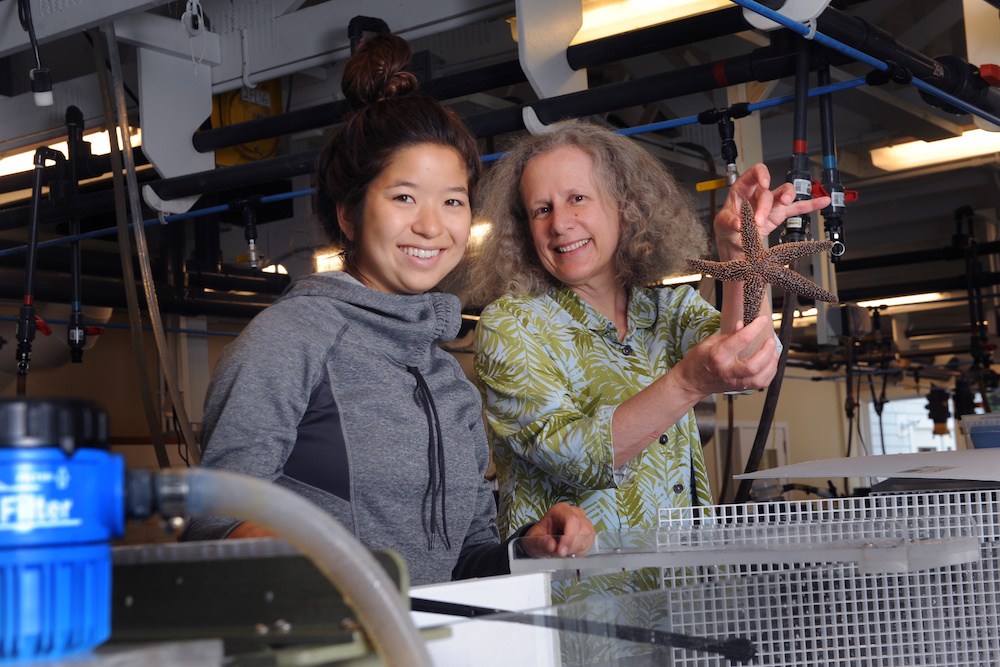
The Arrival of a Full-time Director
In 2011, former Bowdoin President Barry Mills began an effort to raise $26.5 million to advance the research capabilities of the site. Dave Carlon, the Center’s first full-time director, was hired in 2013. Under Carlon’s leadership, improvements were immediately made to the site’s facilities. In 2014, with $500,000 support from the Cargill Foundation, the marine laboratory underwent a significant renovation that expanded access to the seawater system on the “wet” side of the lab and added an adjacent “dry” teaching laboratory space.
That same year, Carlon and Michèle LaVigne, associate professor of earth and oceanographic science, wrote a successful National Science Foundation grant request for $257,000 to add a sophisticated experimental seawater system to the marine laboratory to simulate climate change. This system can manipulate seawater variables such as temperature and pH level. This grant also funded the complimentary Bowdoin Ocean Sensor System (BOSS), an array of sensors located on the research pier that monitor water chemistry in real time.
Also in 2014, Carlon secured a $40,000 donation to buy a new research vessel. Along with a $70,000 match from the College, a 31-foot Parker Hull with dual 250hp outboards was purchased and christened the Research Vessel A.O.K. The R/V A.O.K. has increased access to both inshore and offshore field sites.
Soon after his arrival, Carlon also began discussing ideas for new site-based academic programming. He mapped out the structure for an intensive, science-focused semester that would be taught with sequential course modules, hands-on field and laboratory learning, and capped with a student-designed independent research project. The inaugural Bowdoin Marine Science Semester was launched in 2015 with six students. From 2013 to present, five new full-time staff positions have been created to support the program.
Today, the Bowdoin Marine Science Semester accommodates up to twelve students each fall who want to focus one of their undergraduate semesters on studying advanced marine biology.

For Futures to Come: The Schiller’s Gift
Most recently, a new phase of development was launched when Phil and Kim Schiller P’17 made a $10 million gift to build a larger state-of-art dry laboratory connected to the Center’s existing marine laboratory, and a convening center large enough for 100 people. The expansion included modernized classrooms, housing, and dining facilities for students, faculty, and visiting scholars.
The Center was renamed the Schiller Coastal Studies Center (SCSC) in their honor, and will serve as a facility for retreats, dialogue, and collaboration among local and national scientists and others addressing critical issues of coastal and climate concern.
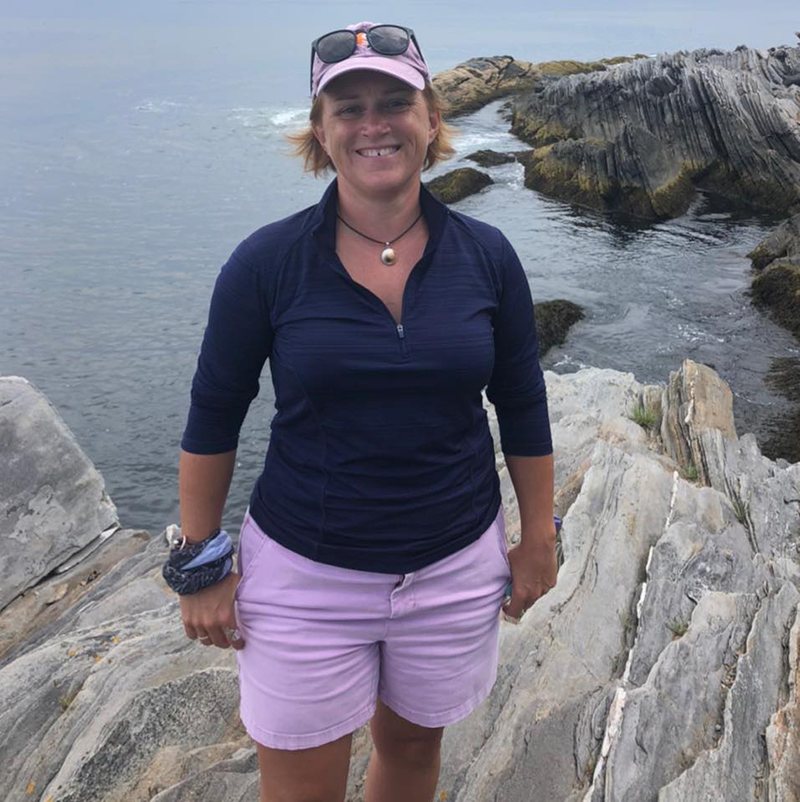
New Director Holly Parker Expands the Center’s Vision
Holly Parker arrived at Bowdoin in 2022, inspired to help students, faculty, and community members ask and answer the hard questions that will help steer us toward a more sustainable future. A social scientist with expertise in sustainability policy and a background in the arts and humanities, she is committed to creating a space at Schiller where all voices are welcome and multi-disciplinary collaborations can help support a thriving waterfront and a healthy ecosystem. Under Parker’s leadership, the Center is widening its mission to focus not only on marine biology, climate change, and coastal research, but also on serving Maine communities through education and outreach.“The Schiller Coastal Studies Center has a pivotal role to play in helping our community of neighbors, business leaders, policy makers, scholars, and students write the next chapter of Maine’s coastal stewardship story,” Parker says.
“We will need researchers and scholars from across the disciplines, community members with generations of local knowledge, policy makers with the skills to craft effective solutions, business leaders eager to build a blue economy, and students who will not only push us in our thinking but also develop a sense of place that will drive their efforts as future sustainability leaders.”
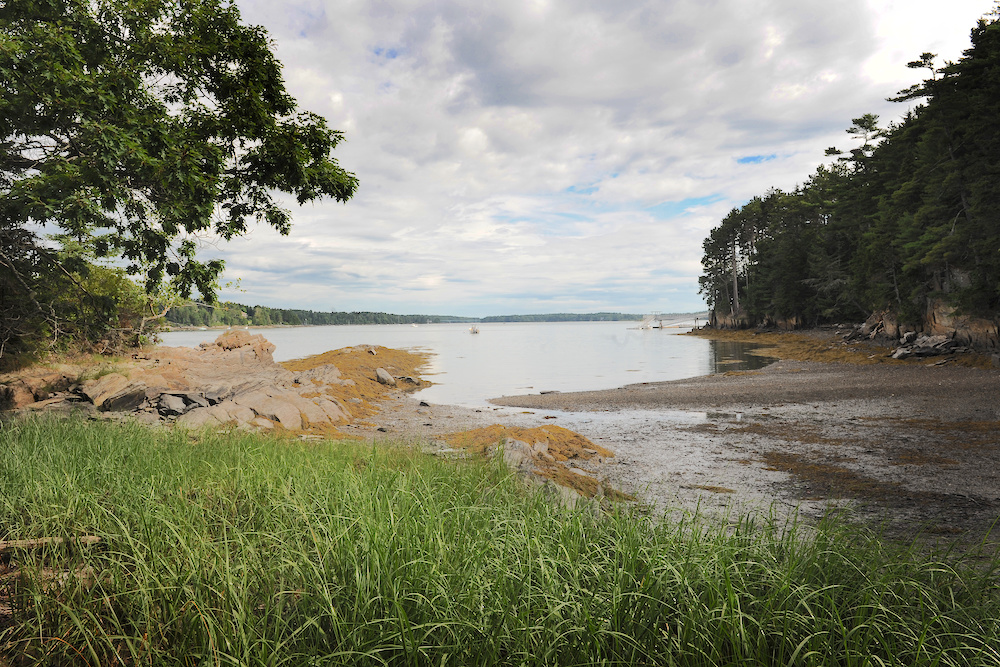
The Changing Gulf of Maine
The rapid warming in the Gulf of Maine, from the standpoints of ecosystems and economies, provides a model for understanding the future of marine systems and coastal communities. The SCSC is on the front line of this research. Its location on Orr’s Island and its proximity to other field sites along the coast of this ecosystem provides incredible access to a natural laboratory in which students and experienced researchers can work together to address questions of global importance: How will the structure and function of marine ecosystems respond to future climate change? What wild fisheries and aquaculture systems will remain productive in the next 100 years? How will these physical and biological changes impact coastal economies and communities?
Meeting the Challenge of Climate Change
Renovations and improvements continue: In the last five years, the SCSC has acquired new boats, completed major marine lab renovations, and added an additional experimental seawater laboratory funded by the National Science Foundation. These improvements support innovative new programs like the Bowdoin Marine Science Semester, and with the Center’s location in the Gulf of Maine, are attracting outside experts and sparking partnerships with research and policy institutions throughout Maine, New England, and the country. SCSC faculty, students, and visiting scholars are working within this collaborative model to understand how climate change is impacting coastal communities and ecosystems—research that can point to solutions that mitigate the impacts of environmental change.

